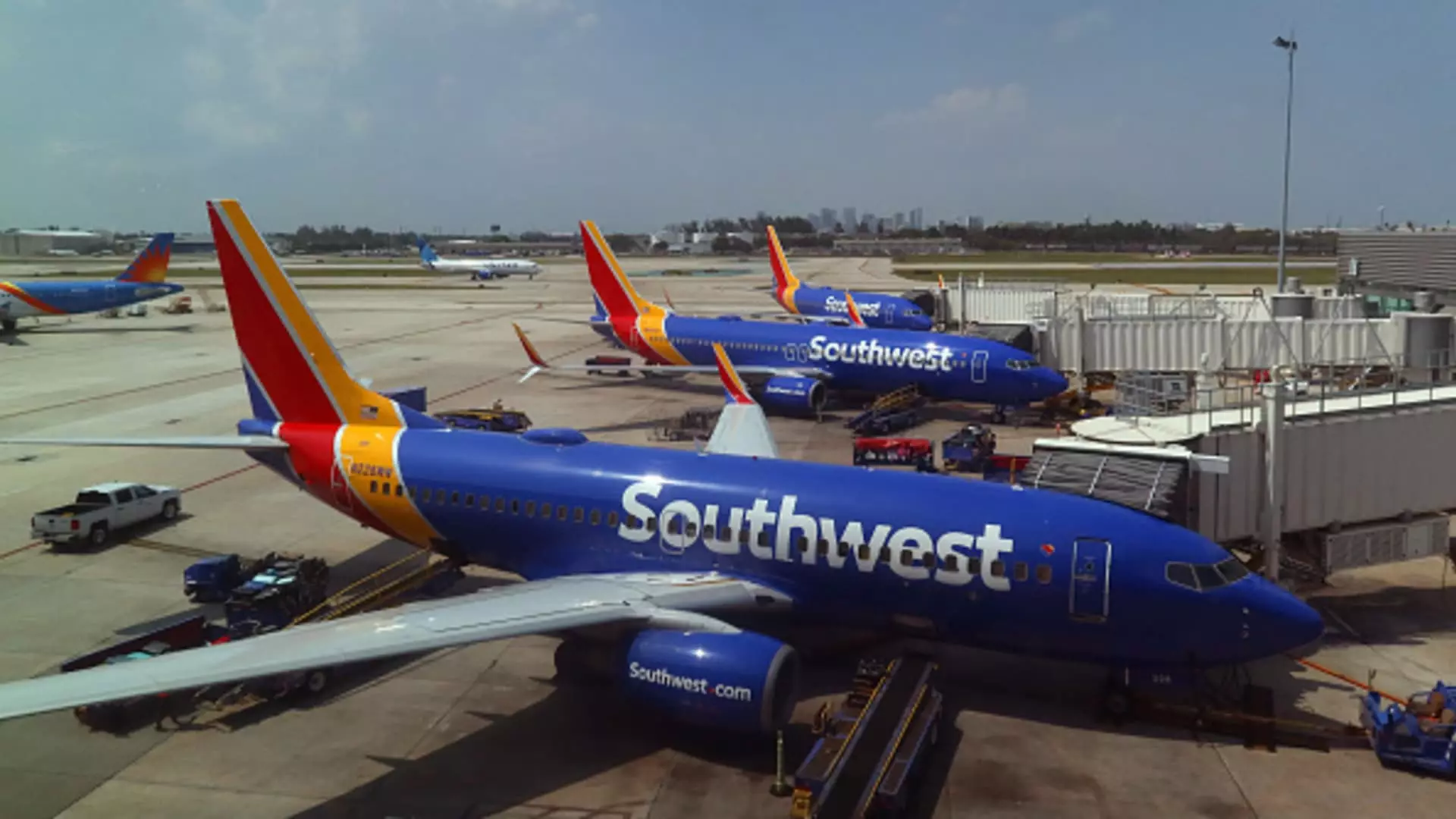Southwest Airlines is facing potential challenges in the third quarter as the oversupplied U.S. market is causing a drop in unit revenue. The airline has forecasted a possible 2% decrease in unit revenue compared to last year. This decrease is due to airlines being forced to discount tickets during what is typically the most profitable time of the year. In addition, non-fuel costs are expected to rise by as much as 13%, putting further pressure on the airline’s financial performance.
In the second quarter, Southwest Airlines saw its revenue increase by 4.5% to a record $7.35 billion. However, its profit declined by over 46% to $367 million, or 58 cents per share. Revenue per available seat mile, a key indicator of airline pricing power, dropped by 3.8%, consistent with the airline’s revised forecast. While the adjusted earnings per share of 58 cents exceeded analysts’ expectations, CEO Bob Jordan acknowledged that the performance fell short of the airline’s capabilities.
Southwest Airlines is currently in discussions with Boeing regarding compensation as the aircraft manufacturer has been struggling to deliver planes on time due to safety and manufacturing issues. The airline expects to receive only 20 aircraft deliveries from Boeing this year, less than half of what was initially anticipated. These challenges have put pressure on Southwest Airlines as it works to increase revenue and navigate investor demands for leadership changes.
In response to the current market conditions, Southwest Airlines has announced significant changes to its business model. The airline is moving away from its traditional open seating plan and will now offer seats on its Boeing aircraft with extra legroom. Additionally, Southwest will be adding overnight flights, marking the most substantial changes to its operations in its more than 50 years of operation. These changes are aimed at making Southwest more competitive with its network carrier rivals and driving growth in both revenue and profit.
Other major airlines, such as Delta Air Lines and United Airlines, have indicated that they expect U.S. capacity to moderate in the coming months, potentially leading to higher fares. This shift in the market could benefit airlines like Southwest, as they seek to improve their financial performance and navigate the challenges of the current industry landscape.
Southwest Airlines is facing a range of challenges in the current market, from declining unit revenue to challenges with aircraft deliveries and investor pressure. The airline is taking proactive steps to address these issues, including strategic changes to its business model and efforts to improve its financial performance. As the industry continues to evolve, Southwest will need to adapt and innovate to remain competitive and ensure long-term success in the dynamic airline market.

